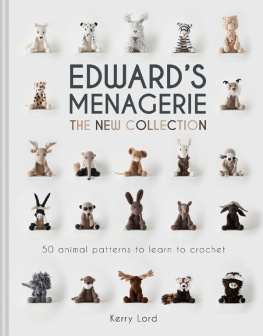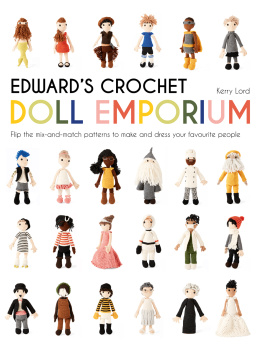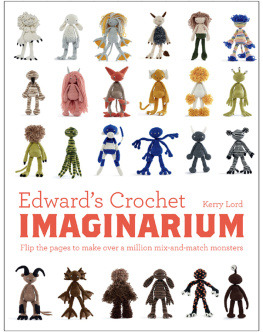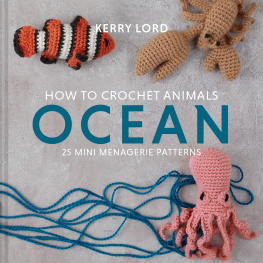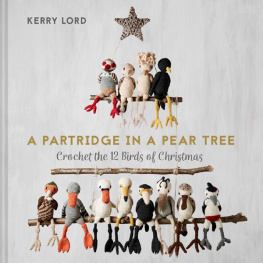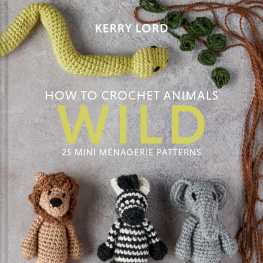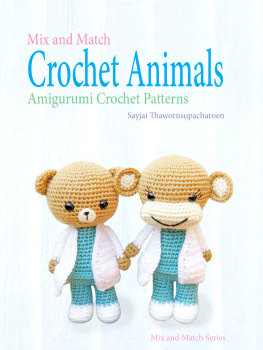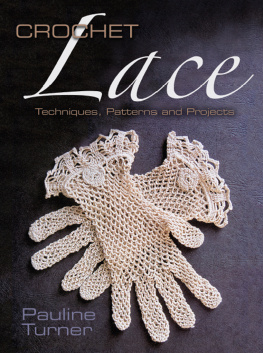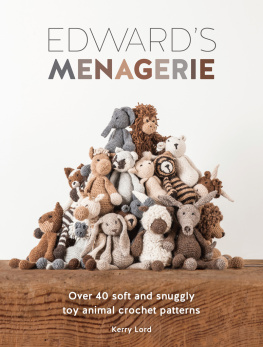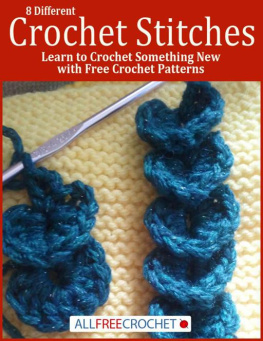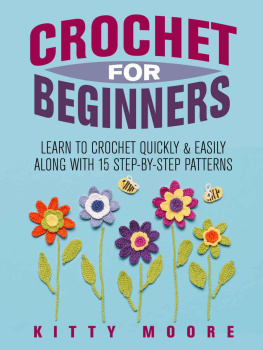Contents
Guide



Contents


Introduction
Edwards Menagerie has been a large part of my life for the last six years. With daily inspiration provided by stories from people all over the world learning to crochet and spreading some joy with my little animal patterns, I am as hooked as everyone else on crocheting the next #edsanimals in the collection. These fifty patterns are a brilliant collection of species from around the world, with something for everyone, from the super-cute Prince the White Tiger through to the more specialist Sid the Giant Anteater. Like a walk through the best zoo in the world, the pages of the book may throw up some of your favourite animals, such as James the Meerkat, but they also aim to make you shake paws with some of the lesser-known and more endangered animals, such as Kylie the Quokka. The first animal I made for this book was Sheila the Kangaroo, and it reignited a fascination with Australasian mammals, learning more about them as I worked my way through to Luke the Flying Fox. One of my earliest childhood animal encounters was seeing these huge creatures hanging upside down on the trees in Sydneys botanical gardens, and my interest in animals from this continent has not waned.
Edwards Menagerie animals continue to be a big hit with my children, who now have shelves piled high with these little animals, but will always find room to squeeze on one more. If you are a complete beginner to crochet and Edwards Menagerie, then start with a Level One animal of your choice, such as Lucy the Hare. In this book the projects are all arranged in order of difficulty, not only into levels, but also within that level, so as you turn the pages each should become a bit more challenging. If you have already mastered your double crochet stitch, then dive straight in where you fancy, and enjoy the structure of knowing that once youve completed Gloria the Red Panda, you have mastered this book! The patterns in this book are designed for you and your friends and family to enjoy and are for private use only. I cant wait to see your photos once you start making these creations, so please dont forget to share them with me and everyone else using the #edsanimals tag. Our menagerie continues to grow, and I hope you enjoy this latest instalment of patterns.
I am certainly still not anywhere close to the end of my list! Enjoy! 
How to use this book
Please dont feel that you have to learn, practise or master the TECHNICALS section at the back of this book before you dive into your first Edwards Menagerie project. The techniques are there for you to acquire, double-check or refresh your crochet skills as you make your first animal, and remember there are videos available at www.toftuk.com should you need any extra clarification on a technique.
Edwards Menagerie: The New Collection has been divided into three skill levels to indicate how many techniques are used within that pattern (or perhaps more importantly, how much concentration you may need to apply when working through it). Although generally speaking this will also be an indicator of how long it will take you to make, there are exceptions, and be aware that animals with chain loop fleeces (such as Quin the Alpaca) will take far longer to finish than one without this kind of detail. The levels are intended to be encouraging, not off-putting, and to ensure that as a newbie to this fun craft, you pick something that will be a bit easier going as you master counting your stitches, holding your yarn and remembering to keep track of where you are in the pattern at the same time. I must emphasise that all of the techniques used are easy; the only thing that makes some of them very demanding is the discipline involved in accurately counting your way through the pattern.
When learning to do a new thing, I know it is nice to be reassured that you are not accidentally trying to run before you can walk (but by all means, if you are one of those people who are happy to push themselves, then flick the pages and dive in!). Edwards Menagerie animals are a collection of patterns and are defined by their shape. They share a standard form that gives them a chubby tummy and more often than not the same legs. You will need to refer to the STANDARD FORMS pages when making all of the patterns (see ), and you will notice that these pages have a yellow edge so you can find them easily when flicking through the book. These standard form patterns are short and simple, and once you have made one animal, you will become very familiar with the patterns (and your six times table). I have used British English crochet terms throughout.
Double crochet (dc) is the same as the American English single crochet (sc). For clarification of which stitch this refers to, please see the basic instructions for the dc stitch in the TECHNICALS section (see ).
Level One
These animals use only chain and double crochet stitch, and simple shaping techniques (increasing by working two stitches into the next stitch and decreasing by double crocheting two stitches together). You will need to refer to BASIC SKILLS and STITCHES (see ) if you are a beginner to crochet.
Level Two
These animals include all the Level One skills with the addition of a basic colour change where you will move from one ball of yarn to the next.
Level Three
These animals require a little more concentration.
Level Three
These animals require a little more concentration.
Techniques include use of the loop stitch, splitting and branching of rounds into smaller ones and also complex colour changing that involves discipline when counting. 
You will need
To make just one, or indeed all, of the animals in this book, the requirements are the same: YARN in appropriate colours and quantities. The animals in this book have been made using a palette of thirteen colours. The TOFT range of yarns is perfect for making animals, as they give a full spectrum of natural shades. CROCHET HOOK in an appropriate size to match that yarn and your tension. I would recommend investing in a comfortable soft-grip hook that is easier on the hand when working the stitches, but also doubles up as a handy tool to push the stuffing inside the parts when it comes to sewing up.
STUFFING MATERIAL. Although I generally choose to stuff my animals with a high-loft polyester toy filling, I have recently experimented with many other types of natural fibre fillings too. Experience has taught me that a polyester stuffing will stand the test of time better with the many cuddles the animals will receive over the years if they are made as childrens toys (it also makes them easier to wash by hand or in a cool cycle in the machine). However, increasingly Edwards Menagerie animals are made for adults, and as we are all more conscious of seeking plastic-free alternatives when practical, I am pleased to say that TOFT now offers a choice of stuffing materials. SEWING NEEDLE. Make sure it has a big enough eye for your chosen yarn.

